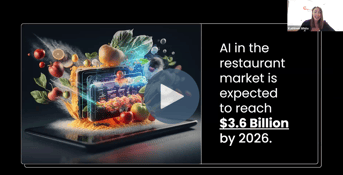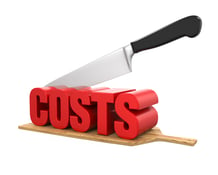A recent article from the New York Times gathered together more than 100 menus from around the world for a fun and informative look at current trends in menu presentation. From fonts, graphics and layouts to insights about the enduring popularity of the Caesar Salad, the big takeaway is that the decisions you make when designing your menu can define your restaurant.
We couldn’t agree more. Your menu conveys your style, your brand, and your identity. But your menu also drives something else pretty important–your profit margins. This is why restaurant inventory management is so vital. An effective inventory management system is the key to optimizing your menu, reducing waste and, ultimately, finding new ways to increase restaurant sales.
Whether or not you hire a sophisticated graphic arts firm to design your menu is up to you. But a reliable restaurant inventory management system is not optional.
What is Restaurant Inventory Management?
Restaurant Inventory Management refers to the strategy you use to monitor your inventory in order to prevent losses and optimize profitability.
Effective inventory management reduces food waste, minimizes the risk of human error and arms you with the data needed to improve both sales and profit margins. In some cases, your inventory management platform may be built into your POS system. In other instances, you may use a standalone inventory management app. Most applications will provide similar inventory metrics including:
-
Incoming Inventory
-
Utilized Inventory
-
Ending Inventory
-
Frequency of Inventory Checks
How Inventory Management Can Help You Optimize Your Menu
So how can you use the data yielded by your inventory management system to optimize your menu?
A robust restaurant inventory management system provides critical insight into your overall Food Cost, which is actually a lot more complicated than it sounds. Your Food Cost is made up of numerous expenses, most of which are subject to constant fluctuation. Your restaurant inventory management platform should provide detailed data on some of the following:
- Cost of Goods (COGs): Everything you spend on food and liquor for your restaurant.
- Cost of Labor: The cost to staff your restaurant’s Front of House and Back of House.
- Food Cost Percentage: The variance between the production cost of an item and its menu price. The optimal range is generally around 30%.
- Recipe Cost Breakdown: The cost of preparing each dish on your menu.
Clearly, a lot of number crunching goes into determining your actual food cost. A good inventory management system does the math so that you can make better informed decisions about what to feature on your menu, how to prepare it, and what to charge for it.
Need a deeper dive into calculating food cost? Check out our helpful guide, complete with percentages and formulas.
How Menu Optimization Increases Restaurant Sales
So how can this type of menu optimization improve restaurant sales? When you use inventory-driven data to make pricing decisions, you give the items on your menu their best opportunity to perform.
You’re using real-time data and analytical insight to price items with greater accuracy, flexibility, and profitability.
Improves Pricing Accuracy
Menu pricing is complicated. Ingredients can fluctuate in price. Small changes to a recipe can have big implications for the cost of producing specific menu items. Your menu pricing should reflect these changes. But there is a balance. You also want to be sure that your pricing is in line with customer expectations.
You need the right data to thread this needle. An effective inventory management system offers several ways to increase restaurant sales by:
- Quantifying the impact of price fluctuation and recipe changes on your costs;
- Drawing connections between pricing and sales performance
- Establishing favorable food cost percentages even as conditions change
Improves Pricing Flexibility
Countless internal and external factors can impact supply costs. The price and availability of critical goods can shift suddenly, and sometimes permanently. Your restaurant must move with agility to navigate these shifts. Restaurant inventory management gives you the ability to closely monitor and respond to the Cost of Goods (COGs) even as conditions change around you.
The right inventory management system can help you find ways to increase restaurant sales even as conditions shift by:
- Adapting pricing to meet macroeconomic challenges
- Managing unexpected changes in inventory supply and demand
- Anticipating and preventing shortages of critical goods
Improves Profitability
Your food cost percentages are the key to your menu’s profitability. When you price items on your menu, the objective is to establish a number that covers the costs of ingredients and overhead expenses while also matching your desired profit margin. When you do this effectively, the menu should contribute directly to increased revenue.
Inventory management helps you price menu items for optimal profitability by:
- Building in sufficient price cushions to prevent sudden menu pricing surges
- Identifying and resolving causes of food waste include portioning, spoilage, and shrinkage
- Anticipating and responding proactively to variables impacting food cost percentages
Menus, Margins, and Inventory Management
Restaurant inventory management gives you the data, insight, and clarity to make intuitive and profitable decisions about what you spend on ingredients, how you build your dishes, and how you price the items on your menu.
When you do these things effectively, your customers will reward you with more orders and your menu will reward you with increased revenue. A good inventory management system may not land your menu a feature spot in the New York Times, but it is one of the most reliable ways to increase restaurant sales.
Want to find more ways to increase restaurant sales? Book a free consultation with one of our experts today.





